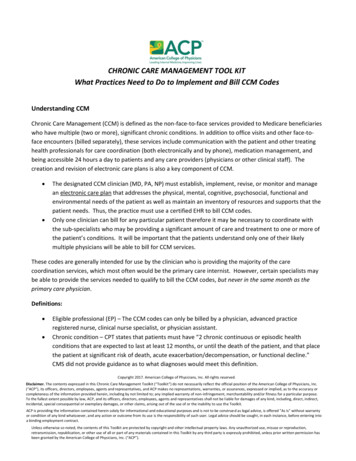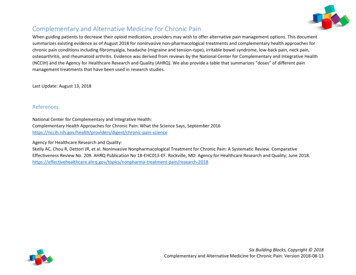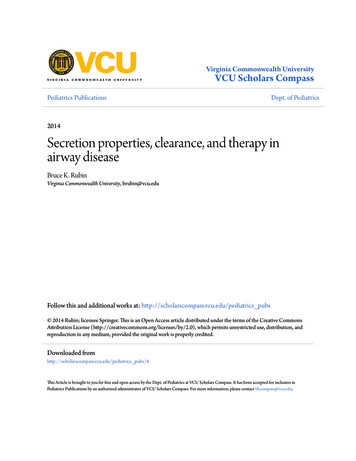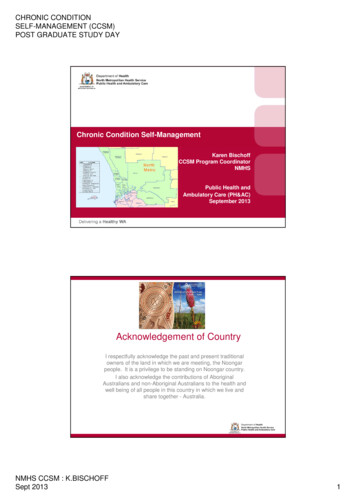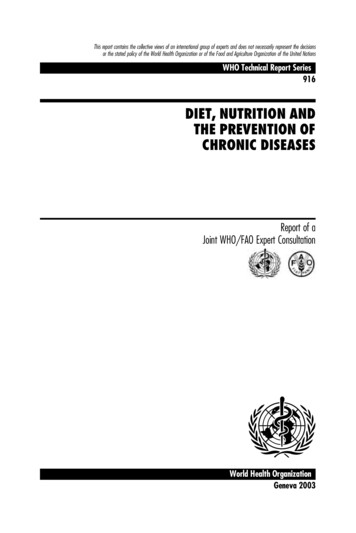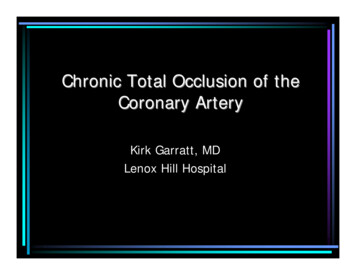
Transcription
Chronic Total Occlusion of theCoronary ArteryKirk Garratt, MDLenox Hill Hospital
What is a Chronic Total Occlusion? A complete blockage of a coronaryartery– Typically described as 99% stenosed Duration 3 months Responsible for clinically significantdecrease in blood flow (TIMI 0-1)
Chronic Total Occlusion Hard Plaque– Fibrocalcific– 50% Collagen/Ca Soft Plaque– 50% Cholesterol– Macrophages– Loose Fibrous Tissue
CTO vs. non-CTOCTO lesionNon - CTO lesion
CTO Procedure
Prevalence of Chronic Total Occlusionsin Patients with Coronary ArteryDiseasePts withCTO30%PtswithoutCTO70%Cardiac Data Sources, BLG Group
Treatment OptionsPatients without CTOPatients with etaz et al, 1997
Percutaneous CTO Treatment Reducesthe Need For CABG 50% - 75%
Percutaneous Treatment of CTOs Success rates of recanalizing CTOs: 47%–72%– Requires greater skill, longer case time– Technology development has not increased successrates Serious complication rates similar to non-CTO All complications rate: 6.8% to 20% More resource intensive (greater radiation andfluoroscopy exposure, increased deviceutilization, increased cath lab time, etc.)Bell MR, Et al: Circularion 1992: 85:1003-1011Plante S, Et. Al: Am Heart J 1991; 121:417Ruocco NA, Et al: Am J Cardiol 1992; 69:69-76Safian RD, Et al: Am J Cardiol 1988; 61:23G-28G
Chronic Total Occlusion “Most frequently identified yet least likely tobe treated lesion subset in interventionalcardiology today.” 1 “I have heard of hospitals that do not wantcardiologists taking on CTOs because they tieup the cath lab.” 21 KandzariDE, Evidence-based rationalefor CTO revascularization. TCT 2005,Washington DC2 Rutherford B. heartwire November 4,2005, theheart.org
PCI Complexity Index by MultivariateAnalysisVariableNo of complex lesionsScore1.0Bifurcation stentingOstial stenting1.50.8CTO 3 monthsSevere Tortuosity2.84.9Complexity IndexΣBernardi et al, CCI 2000, 51:1-9
CTO Summary Common disorder with inconsistent, nonuniform treatment patterns Associated with high resource consumption Increased restenosis risk Failure to treat associated with worse early andlate patient outcomes
Tracking CTO Therapies Although documentation exists, limited ability to trackCTO procedural volume means:– Cannot accurately ascertain number of treated and untreatedCTOs– Difficult to measure effect on CABG utilization rates– Difficult to optimize management strategies in MVD– Difficult to track outcomes across different treatmentmodalities Improved data capture can be used to track treatmentoutcomes and improve quality of care
How are CTOs documented? Medical terminology: CTO common term usedby Cardiologists Physicians will specify the lesion as a ‘chronictotal occlusion’ of the coronary artery Documentation of ‘chronic total occlusion’may be found on: Coronary angiography reportsInterventional cardiology reportsOperative reportsHistory and physical and progress notes
The Intent More physicians will have data on the importance intreating CTOs More understanding and data will exist on the clinicaloutcomes of various treatment options Improve treatment strategies to optimize quality oflife
Any Questions?
Medical terminology: CTO common term used by Cardiologists Physicians will specify the lesion as a 'chronic total occlusion' of the coronary artery Documentation of 'chronic total occlusion' may be found on: Coronary angiography reports Interventional cardiology reports Operative reports


